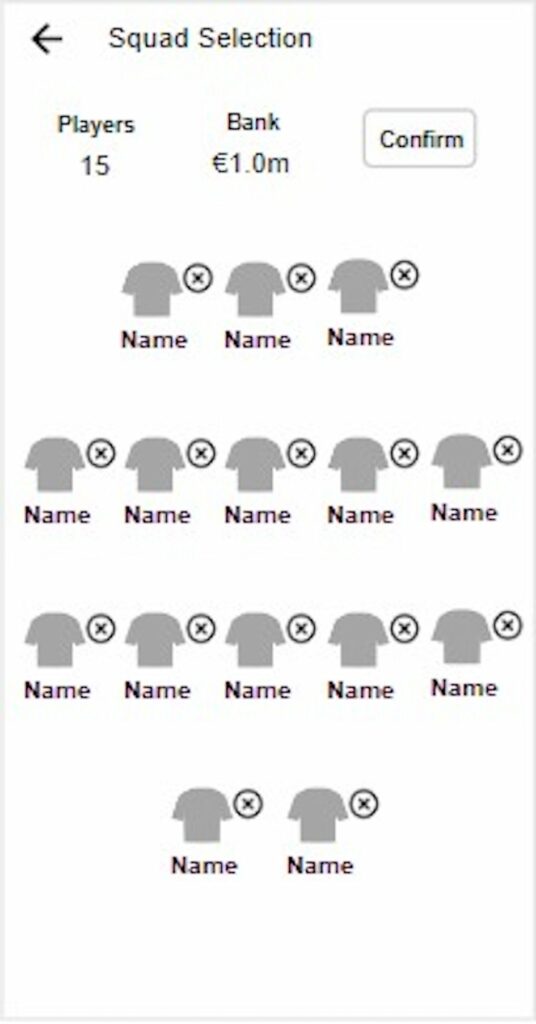Fantasy football is a type of online game, the most common form of which consists in participants creating fictitious virtual teams of real-life football players and score points based on the players’ performance in actual matches. Such fantasy football apps help increase fan engagement, retention and acquisition. This project set out to create a usability tested and evaluated user interface for a Maltese Premier League fantasy football app, which, at the time of submission, was not yet available.
A user-centric design methodology was used in this research study. This approach prioritises the needs and preferences of the target users throughout the entire design process. Three iterations took place in total; at every iteration usability testing involving the target users was conducted, to ensure that the user interface met their needs. The evaluation metrics chosen were effectiveness, efficiency and satisfaction.
In the first iteration, three paper prototypes were created and underwent usability testing. Upon due evaluation, the best-performing prototype was chosen to be developed further. In the second iteration, a high-fidelity prototype was developed in the form of a native mobile app, which was usability tested and evaluated. In the final iteration, the feedback and results from the second iteration were taken into account and improvements were made to the high-fidelity prototype. Competitive usability testing was carried out to compare the final prototype with the English Premier League fantasy football app, in terms of the evaluation metrics mentioned above.
The evaluation metrics showed improvement at every iteration, suggesting that the usability testing was effective. The results of the competitive usability testing were evaluated using the paired t-test and no statistical difference was found in any of the evaluation metrics between the two interfaces. This would indicate that the proposed high-fidelity prototype is comparable to the English Premier League fantasy football app, in terms of usability.

Figure 1. The squad-selection screen in the first prototype

Figure 2. The squad-selection screen in the final prototype
Student: Keene Muscat
Supervisor: Dr Colin Layfield
